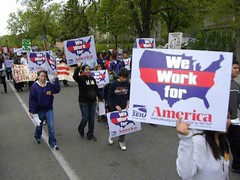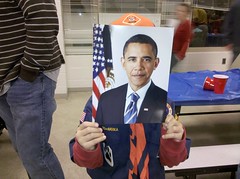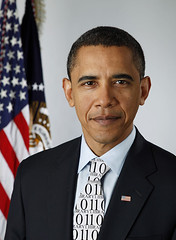 The San Bernadino Sun recently reported on Louisiana State University sociologist Edward Shihadeh’s recently published research on the effect of Latino immigration on black labor market participation:
The San Bernadino Sun recently reported on Louisiana State University sociologist Edward Shihadeh’s recently published research on the effect of Latino immigration on black labor market participation:
Latino immigration caused black workers to be uprooted from low-skill labor markets, which in turn increased crime in urban areas across the country, according to [Shihadeh’s] study.
The problem can be traced to the failure of U.S. immigration policies, said LSU sociology professor Edward Shihadeh…Latino immigration used to be a two-way trip; immigrants moved back and forth across the U.S.-Mexico border as economic needs dictated, he said. But when border security was intensified over the past two decades, it became too risky for many illegal immigrants in the United States to go home for fear they would not be able to return, Shihadeh said.
The large number of Latino workers who remained in the country flooded low-skill industries, displacing blacks from jobs in agriculture, manufacturing and construction, he said.
“This is really a story of unintended consequences,” said Shihadeh. “The wall and all these border restrictions that have been put up were intended to control immigration and keep Latinos out. What happened was it really trapped them in the country.”
These findings resonate with frustration expressed by black community leaders. However, another sociologist disputed the premise of Shihadeh’s findings:
Elsa Valdez, a sociology professor at Cal State San Bernardino, said it’s “absolutely ridiculous” to accuse immigrants of taking jobs and causing the economy to fail.
“People place blame on the immigrants for all the social ills of society,” Valdez said. “They have no power. They don’t control the financial markets. They don’t control the banks. They don’t control the manufacturing industries that have located overseas because they can hire cheap labor.”
Another sociologist chimed in with policy recommendations:
Jose Zapata Calderon, a professor of sociology and Chicano studies at Pitzer College in Claremont, said that both Latino immigrants and blacks would benefit from comprehensive immigration reform.
“National policy should recognize that when legalization is allowed and the undocumented status is removed, wages and productivity increase for all workers, not just immigrants,” Calderon said.


 According to the
According to the 

 A recent
A recent 
